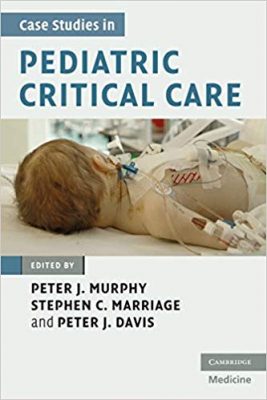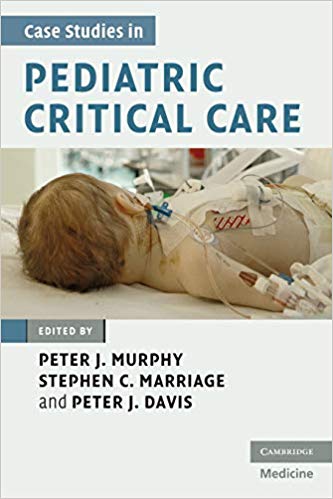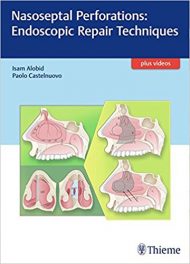 Editors: Peter J. Murphy, Stephen C. Marriage, and Peter J. Davis
Editors: Peter J. Murphy, Stephen C. Marriage, and Peter J. Davis
Publisher: Cambridge University Press – 335 pages
Book Review by: Nano Khilnani
The learning you will receive from this book is based on actual cases in pediatric critical care. Professor Peter J. Fleming of the FSID Research Unit in Bristol, UK, who wrote the Foreword for this book, asserts: “we learn best by experience.”
He writes: “No textbook can hope to replace the learning process that occurs from long hours of clinical practice, the experience of decision-making (whether right or wrong) and the deeply ingrained learning that comes from the process of clinical apprenticeship.”
This book is focused on caring for critically injured and ill children. Its emphasis is on the human and humane aspects of such care, as well as on the scientific aspects of pediatric intensive care, and the critical epidemiological rigor required for effective treatment.
Forty-six specialists in pediatrics, including in the fields of anesthesiology for children, child life and health care, pediatric cardiology, pediatric critical-intensive care, pediatric emergency, medicine, and related areas – from all over the United Kingdom and the United States, as well as five other countries – Australia, Canada, Malaysia, New Zealand, and South Africa – authored the 27 chapters of this book focused on pediatric critical care:
- Respiratory syncytial virus bronchiolitis
- The infant with meningococcal septicemia
- A 2-year-old child with bacterial meningitis
- Management of a neonate with hypoplastic left heart syndrome
- Child with a head injury
- Management of diabetic ketoacidosis in a child
- Tricyclic antidepressant poisoning
- Management of hemolytic uremic syndrome
- Management of severe acute asthma in children
- The neonate with total anomalous pulmonary venous connection
- Critical care for a child with 80% burns
- Coarctation of the aorta in a neonate
- The 2-month old with severe pertussis (whooping cough)
- Pericardial effusion in a child
- Management of non-accidental injury on the Pediatric Intensive Care Unit (PICU)
- Management of a 3-year-old child with drowning
- Child with dengue hemorrhagic fever
- The child with HIV infection
- Refractory narrow complex tachycardia in infancy
- The neonate with hyperammonemia
- Management of acute heart failure in pediatric intensive care
- Tetralogy of Fallot
- The child with thermal injury and smoke inhalation
- A child with multiple trauma
- Management of a patient with a failing Fontan – morbidities of a palliative procedure
- Sepsis in a BMT patient admitted to PICU
- Management of a sagittal sinus thrombosis in a child
Let us take a look at chapter 25 entitled Management of a patient with a failing Fontan – morbidities of a palliative procedure, authored by Heather A. Dickerson and Anthony C. Chang.
The Fontan procedure is a cardiac surgical technique, sometimes also called the Fontan–Kreutzer procedure. It’s a palliative surgical procedure used in children with univentricular hearts. It involves diverting the venous blood from the inferior vena cava or IVC, and the superior vena cava or SVC, to the pulmonary arteries without passing through the morphologic right ventricle, so that the systemic and pulmonary circulations are placed in series with the functional single ventricle. The procedure was initially performed in 1968 by Francis Fontan and Eugene Baudet, and further described in 1973 by Guillermo Kreutzer.
The authors of the above chapter in this book write: “This case illustrates many of the post-operative complications encountered in the follow-up of the patient who has had a Fontan procedure.” When the patient was eight years old, she underwent an atriopulmonary Fontan procedure because she was born with tricuspid atresia with normally great arteries, but had a ventricular septal defect, and pulmonary stenosis.
She did well for some 20 years with good exercise tolerance and no arrhythmias, and was maintained on no medications. But here’s what happened at 28 years old, quoting Dickerson and Chang:
“She presented with increased lower extremity edema, palpitations and poor exercise tolerance. An echocardiogram revealed a patent atriopulmonary Fontan connection without a discernible gradient into the pulmonary arteries, and a severely dilated right atrium, mild to moderate left ventricular dysfunction, mild to moderate mitral regurgitation, and a competent aortic valve.”
So what was the treatment plan, with these findings? Get this book, and then read this chapter on the Fontan procedure thoroughly to find out what was done to treat this patient!
Editors:
Peter J. Murphy is Consultant Pediatric Anesthetist and Intensivist in Pediatric Intensive Care at Bristol Royal Hospital for Children in Bristol in the United Kingdom.
Stephen C. Marriage is Associate Specialist in Pediatric Intensive Care at Bristol Royal Hospital for Children in Bristol in the United Kingdom.
Peter J. Davis is Consultant Pediatric Intensivist in Pediatric Intensive Care at Bristol Royal Hospital for Children in Bristol in the United Kingdom.







